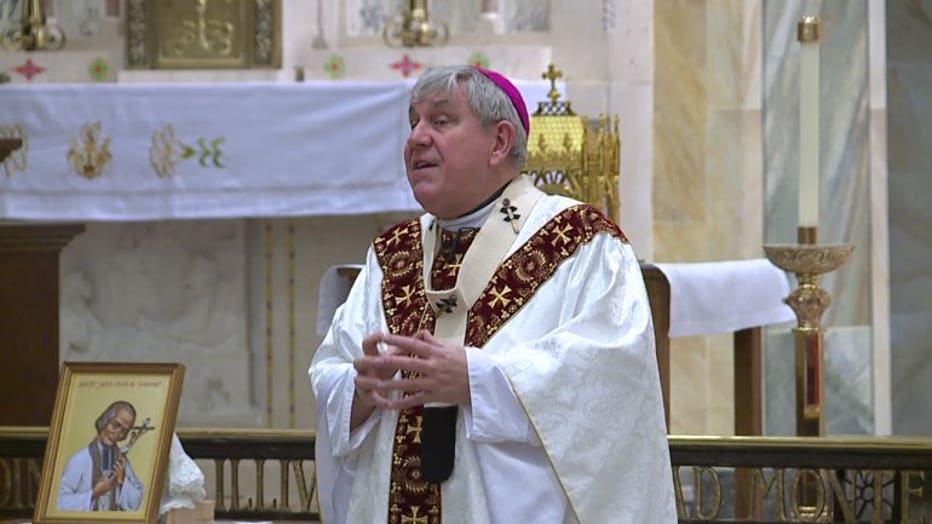'Heart of a Priest' tour: Sacred relic of St. John Vianney on display at Holy Hill Basilica
HUBERTUS -- St. John Vianney is described as "what a Catholic priest should be," and his heart was on display at the Holy Hill Basilica on Wednesday, Jan. 23.
A special ceremony was held to welcome the sacred relic of St. John Vianney.
He was originally from France, and he passed away in 1859.
The relic is making its way around the country as part of the "Heart of a Priest" tour. “Heart of a Priest,” which refers to the physical heart of John Vianney that has resisted decay for more than 150 years and to the good character that should belong to every priest.

The relic was set to leave Holy Hill after Mass Thursday evening, Jan. 24 at 6:30 p.m. Wednesday's Mass was celebrated by Milwaukee Archbishop Jerome Listecki.
About St. John Vianney
St. John Vianney popularly known as the Curé of Ars, is revered as a model of priestly generosity, purity and prayerfulness. Born in France in 1786, he grew up in a time of open
hostility to the Church in the wake of the French Revolution when the faith was attacked, churches destroyed, and the clergy martyred. Assigned to lead the parish in the small farming community of Ars. Father Vianney excelled at both prayer and work.
He was famous for hearing confessions for up to 18 hours a day as people from across Europe and beyond came to see him. His notoriety throughout the Catholic world grew even after his death in 1859 and he continues to inspire a quest for holiness by both priests and the laity. His incorrupt heart — a major relic — normally resides at the shrine named for him in Ars.
About relics
In Catholic tradition, a relic is a physical object associated with a saint that may be offered to the faithful for veneration. Neither the relic nor the saint are to be worshipped, but are rather venerated as holy objects in recognition of the fact that God has worked through the saint. A major or first-class relic was part of the saint’s body as opposed to something that the saint touched or wore. The term “incorrupt” refers to a human body that has avoided the normal process of decomposition after death. It is a sign — but not a proof — of the person’s holiness, and is sometimes seen in Catholic saints and blesseds.

